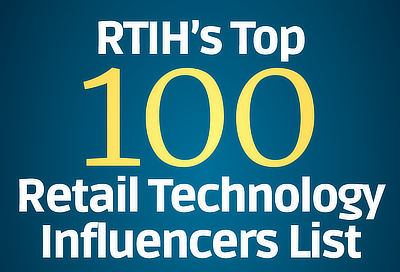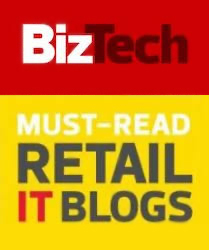Research
- September 06, 2021
Supply Chain Technology Study 2021 - Preparing for the Supply Chain of Tomorrow
To future-proof retail supply chains against the inevitable next round of disruptions, retailers are devoting 30% of their overall tech budgets to improving overall supply chain capabilities. The most future-forward technologies that show the highest levels of retailer interest are robotic automation — robots for picking and packing (20%), drone or self-driving customer delivery (16%), and robots/computer vision for shelf stock monitoring (16%). Dark stores (16%) also appear on the emerging tech list. -from RIS News
- August 30, 2021
Top 10 Touchless Trends to Watch
2021 Retail Technology Purchases Plans by Sector. Stores more important than ever, but great changes are happening. Labor shortages. Inflation in wages / product costs. Chip shortages. Customer pickier, want removal of friction. Great inefficiencies due to COVID-19. -from IHL Group
- August 23, 2021
NRF 2021 USA Retail Security Survey
Despite the many new avenues for shrink, the overall rate of USA retail shrink remained relatively steady compared with 2019. While that can be seen as good news, it is worth noting that it remains above the five-year average. The shrink rate also seems to cut a fairly wide swath across retailers, with fewer keeping their shrink rates below 0.5%.
- August 16, 2021
Retail's Shakeout and Growth Story
The True USA Story of Store Openings and Closing. For each company closing stores, 4.2 are opening stores. Retail growth is accelerating. Labor, product, and chips are major constraints. Chain retailing has mostly right-sized. - From IHL Services Group
- August 09, 2021
33 Statistics Retail Marketers Need to Know in 2021 -Invoca Blog
81% of retail shoppers conduct online research before buying. In 2021, US retailers will spend $35.48 billion on digital ads. This is a 25% projected increase from 2020. The average cost for a retail lead is $34. The average conversion rate for a retail lead is 3%.
- August 02, 2021
The eBook: Retail Commerce In Context
RSR's goal in their most recent study was to understand how well retailers have been able to pivot to a digital-first world, the challenges they face, the opportunities nascent in the marketplace, and how their technology portfolios are able to support these shifts profitably? -from RSR Research
- July 26, 2021
The Shopper Speaks: 8 ideas for focusing on returns
Online returns more than doubled in 2020 from 2019. Ecommerce accounted for $565 billion, or 14%, of total U.S. retail sales. Plus, approximately $102 billion of merchandise purchased online was returned. -from Digital Commerce 360
- July 19, 2021
Life Reimagined: Mapping the motivations that matter for today's consumers
Global consumers have new motivations beyond price and quality. They are ready to abandon brands that don’t support their reimagined values. And to pay more to those that do. - From Accenture
- July 12, 2021
The Future Shopper Report 2021
A deep dive into 17 international markets and 28,000+ consumers to uncover how the global online shopper is shaping the future of commerce and how businesses need to respond to win online. -from Wunderman Thompson Commerce
- July 05, 2021
Evolution of How Consumers Shop -RIS News
The powerful combination of digital shopping and brick-and-mortar stores creates a multiverse of options for consumers. When executed effectively, a comprehensive omnichannel strategy creates a flywheel effect for retailers that drives sales and consumer loyalty to new levels, a phenomenon demonstrated by successes from such omni-commerce leaders as Target, Walmart, Lowe’s, Best Buy, and Kroger.
- June 27, 2021
PwC's Global Consumer Insights Survey 2021- The global consumer: Changed for good
The COVID-19 pandemic has been one of the greatest health crises in modern history. As consumers pivoted and adopted new habits, business leaders whether changes would be fleeting or permanent. Now PwC's June 2021 Global Consumer Insights Pulse Survey reveals that the changes are sticking - signifying a historic and dramatic shift in consumer behavior.
- June 21, 2021
The Shopper Speaks: Who is the post-COVID apparel shopper? - Digital Commerce 360
2020 online apparel sales totaled $240.71 billion, which was down 20.3% from $301.84 billion in 2019. There is room for a comeback and two questions remain: how much and how quickly?
- June 14, 2021
Retailers Reflect on the Future of Stores
As most industry folks know, stores are not dying but stores are evolving. According to multiple sources, approximately 75% of global retail sales will still take place in store in 2024. And many retail pundits predict a “retail renaissance” period with people flocking to stores over the coming years. -from Rethink Retail
- June 07, 2021
How to End the Global Pandemic in 2022
The COVID-19 recovery will be driven by disease progression, de-averaged economic Impact, government policies, and business and public responses. – From BCG Executive Perspectives
- May 31, 2021
A new era for RFID in retail -Accenture
The majority of retailers (80%) said the benefits of RFID cannot be replicated by another technology. Retailers that have fully adopted RFID are reporting more than 10% ROI compared to 9.2% two years ago. Opportunities remain to continue to unlock value from RFID and deliver on promises made to customers. Accenture has studied RFID in retail for eight years. It is here to stay, and it’s growing. -from Accenture
Page 10 of 35
















